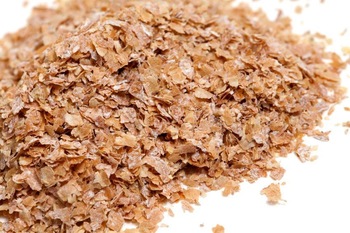What is Wheat Bran?
Wheat bran is the outer layer of the wheat kernel that is removed during the refining process to produce white flour. It is a highly nutritious food that is rich in fiber, vitamins, and minerals, and offers numerous health benefits. Wheat bran is a good source of insoluble fiber, which promotes digestive health by adding bulk to the stool and preventing constipation. It also contains soluble fiber, which can help regulate blood sugar levels, lower cholesterol, and promote a feeling of fullness, making it beneficial for weight management. Wheat bran is also rich in vitamins and minerals, including vitamin B6, thiamin, magnesium, iron, and zinc. These nutrients are important for maintaining overall health, including supporting immune function, regulating energy metabolism, and promoting healthy skin, hair, and nails. Wheat bran can be incorporated into the diet in a variety of ways, making it a versatile and beneficial addition to any healthy eating plan.
Wheat Bran Nutrients Facts
Wheat bran is a nutrient-dense food that is rich in fiber, vitamins, and minerals. One cup of raw wheat bran (approximately 58 grams) contains:
Calories: 125
Protein: 7.7 grams
Carbohydrates: 28 grams
Fiber: 26 grams
Fat: 1.7 grams
Iron: 4.2 milligrams (23% of the recommended daily intake)
Magnesium: 160 milligrams (40% of the recommended daily intake)
Phosphorus: 415 milligrams (42% of the recommended daily intake)
Zinc: 3.5 milligrams (24% of the recommended daily intake)
Vitamin B6: 0.5 milligrams (25% of the recommended daily intake)
Thiamin (Vitamin B1): 0.7 milligrams (44% of the recommended daily intake)
Wheat Bran Uses
There are many ways to incorporate wheat bran into your diet. Here are some common uses:
As a breakfast cereal: Mix wheat bran with your favorite milk, yogurt, or fruit and enjoy it as a cereal.
In smoothies: Add a tablespoon or two of wheat bran to your favorite smoothie recipe for an added boost of fiber.
In baked goods: Substitute up to 25% of the flour in your baking recipes with wheat bran to add fiber and nutrients.
As a coating for meat or fish: Mix wheat bran with your favorite seasonings and use it as a coating for chicken, fish, or tofu.
In soups and stews: Add a tablespoon or two of wheat bran to your favorite soup or stew recipe for added texture and nutrition.
As a topping: Sprinkle wheat bran on top of oatmeal, yogurt, or fruit for added crunch and nutrition.
In homemade energy bars: Combine wheat bran with other healthy ingredients like nuts, seeds, and dried fruit to make homemade energy bars.
Health Benefits of Wheat Bran
Wheat bran is the outer layer of the wheat kernel and is a great source of dietary fiber, vitamins, and minerals. Here are some of the health benefits of consuming wheat bran:
1. Rich in Fiber
Wheat bran is a good source of dietary fiber, which can help promote digestive health and prevent constipation.
2. Lowers Cholesterol
Consuming wheat bran has been shown to lower cholesterol levels in the blood, which can reduce the risk of heart disease.
3. Controls Blood Sugar
The fiber in wheat bran slows down the absorption of glucose into the bloodstream, which can help to regulate blood sugar levels and prevent spikes in insulin.
4. Helps with Weight Management:
The high fiber content of wheat bran helps to keep you feeling full for longer periods, which can aid in weight management by reducing hunger and preventing overeating.
5. Supports Gut Health:
The prebiotic fibers in wheat bran can help nourish the beneficial bacteria in the gut, promoting a healthy gut microbiome.
6. Nutrient-dense:
Wheat bran is a good source of vitamins and minerals, including iron, magnesium, and B vitamins, making it a nutritious addition to a balanced diet. Which are important for maintaining overall health and wellness.
7. Digestive Health
Wheat bran is an excellent source of insoluble fiber, which promotes regular bowel movements and prevents constipation. It also helps to maintain a healthy gut by supporting the growth of beneficial gut bacteria.
Risks and Side Effects
While wheat bran is generally considered safe and nutritious, consuming too much of it can cause some side effects. Some potential side effects of consuming excessive amounts of wheat bran include:
1. Digestive Discomfort
Wheat bran is high in fiber, which can cause bloating, gas, and constipation if consumed in excess or if the body is not accustomed to it.
2. Nutrient Absorption
The high fiber content in wheat bran may interfere with the absorption of certain nutrients, such as calcium, iron, and zinc, especially when consumed in large quantities.
3. Allergic Reactions
Some people may have an allergy or intolerance to wheat, which could cause symptoms such as skin rash, hives, itching, or difficulty breathing.
4. Gluten Sensitivity
Wheat bran contains gluten, a protein that can cause digestive issues in people with gluten sensitivity or celiac disease.
5. Medication Interactions
The high fiber content in wheat bran may interfere with the absorption and effectiveness of certain medications. It's recommended to consult a healthcare provider before consuming wheat bran if taking medications regularly.
Final Words
wheat bran is a nutrient-dense food that is rich in fiber, vitamins, and minerals. It offers numerous health benefits, such as promoting digestive health, lowering cholesterol, regulating blood sugar, supporting weight management, and nourishing the gut microbiome. However, consuming excessive amounts of wheat bran can cause digestive discomfort, interfere with nutrient absorption, and potentially cause allergic reactions or medication interactions. It's important to consume wheat bran in moderation and gradually introduce it to the diet, while also staying hydrated and consulting a healthcare provider if experiencing any adverse reactions.



 Contact Us
Contact Us







 Hospitals
Hospitals
 Doctors
Doctors
 Diagnostic
Diagnostic
 Pharmacy
Pharmacy
 Health Tips
Health Tips
 Blog
Blog

















Comments